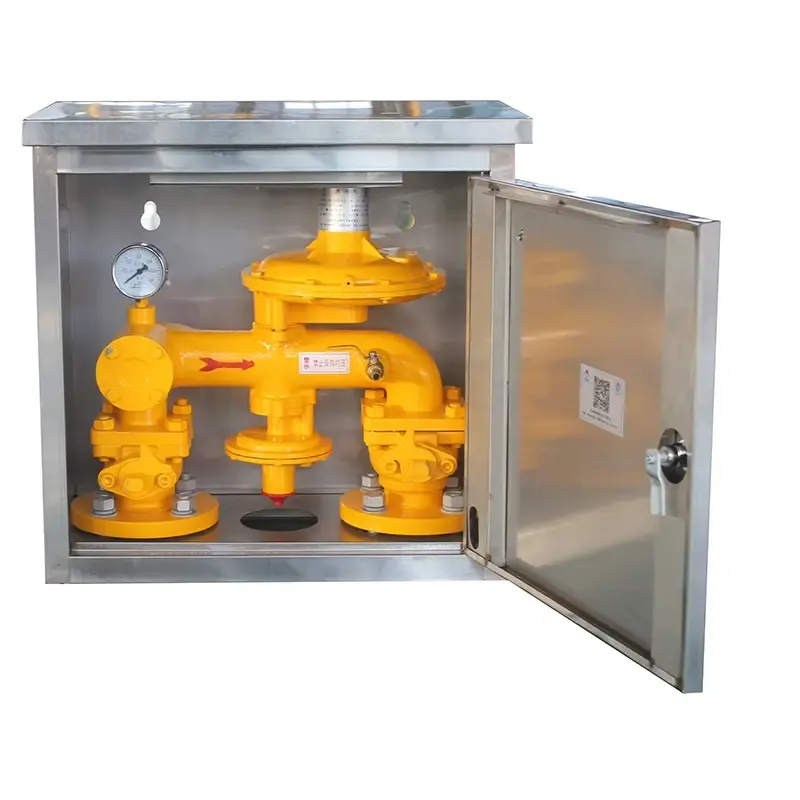
Sep . 07, 2024 20:04
Back to list
Pressure Reducing Station | Efficient Pressure Management Solutions
Understanding Pressure Reduction Stations Their Importance and Functionality
Pressure reduction stations are crucial components of gas distribution systems, playing an essential role in ensuring the safe and efficient delivery of natural gas to various consumers. These stations are strategically located throughout gas supply networks, serving as the intermediary between high-pressure pipelines and the lower-pressure distribution systems that ultimately deliver gas to residential, commercial, and industrial users.
What is a Pressure Reduction Station?
A pressure reduction station, or PRS, is designed to reduce the pressure of natural gas transported through high-pressure pipelines to a level that is safe and suitable for local distribution. Natural gas is typically transported at high pressures to facilitate efficient long-distance movement through pipelines. However, this high pressure is not suitable for end-users, who require gas at much lower pressures. The PRS effectively steps down this pressure, ensuring that gas can be delivered efficiently and safely.
How Does It Work?
The operation of a pressure reduction station involves several key components, including pressure regulators, valves, and measurement devices.
1. Inlet Valve The process begins at the inlet valve, where high-pressure gas enters the station.
.
3. Safety Features Pressure reduction stations are equipped with various safety measures, such as excess flow valves and monitoring systems that continuously check pressure levels. These safety features help prevent overpressurization, which can lead to hazardous situations, including leaks or explosions.
محطة تخفيض الضغط

4. Outlet Valve Once the gas pressure is appropriately reduced, the gas exits the station through an outlet valve and enters the local distribution network, where it can be delivered to homes and businesses.
Importance of Pressure Reduction Stations
Pressure reduction stations are vital for several reasons
- Safety By ensuring that gas is delivered at safe pressure levels, PRS help minimize the risks associated with high-pressure gas supply, protecting both infrastructure and life.
- Efficiency These stations enhance the efficiency of gas distribution systems, allowing for optimal pressure management that aligns with consumer demand.
- Reliability A well-maintained PRS contributes to the overall reliability of gas supply, ensuring that consumers have access to natural gas whenever needed, thereby supporting energy stability in communities.
- Regulatory Compliance PRS play a significant role in meeting regulatory standards for gas distribution, ensuring that operators adhere to safety and operational protocols.
In conclusion, pressure reduction stations are a cornerstone of natural gas distribution networks. They effectively manage and control gas pressure, ensuring safe, efficient, and reliable supply to end-users. With advancements in technology and continuous monitoring capabilities, the role of PRS is becoming increasingly sophisticated, contributing to a more resilient energy infrastructure. Understanding their function and importance underscores the critical nature of these facilities in our everyday lives, as they support not only economic growth but also the safety and security of energy supply systems worldwide.
Latest news
-
Safety Valve Spring-Loaded Design Overpressure ProtectionNewsJul.25,2025
-
Precision Voltage Regulator AC5 Accuracy Grade PerformanceNewsJul.25,2025
-
Natural Gas Pressure Regulating Skid Industrial Pipeline ApplicationsNewsJul.25,2025
-
Natural Gas Filter Stainless Steel Mesh Element DesignNewsJul.25,2025
-
Gas Pressure Regulator Valve Direct-Acting Spring-Loaded DesignNewsJul.25,2025
-
Decompression Equipment Multi-Stage Heat Exchange System DesignNewsJul.25,2025

